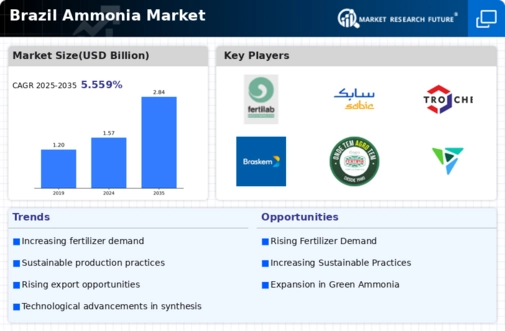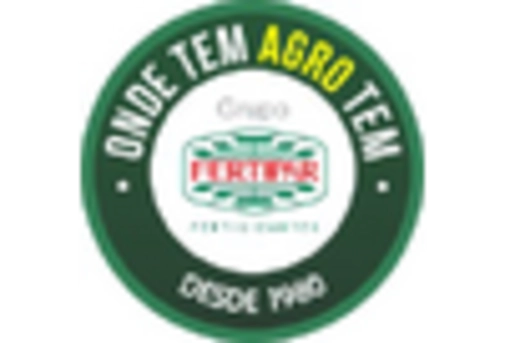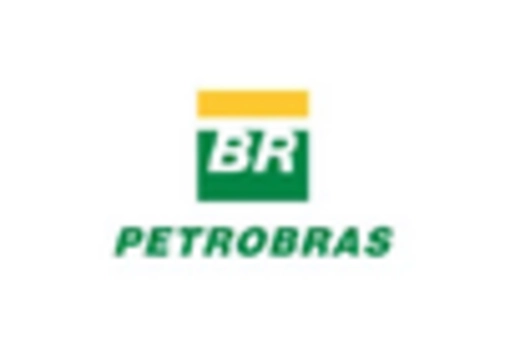The ammonia market in Brazil is characterized by a competitive landscape that is increasingly shaped by innovation, sustainability initiatives, and strategic partnerships. Key players such as Yara International ASA (NO), CF Industries Holdings, Inc. (US), and Nutrien Ltd. (CA) are actively pursuing strategies that emphasize technological advancements and regional expansion. Yara International ASA (NO) has focused on enhancing its production capabilities through digital transformation, which appears to be a critical factor in maintaining its competitive edge. Meanwhile, CF Industries Holdings, Inc. (US) has been investing in sustainable practices, aligning its operations with global environmental standards, which may enhance its market positioning in the long term. Collectively, these strategies suggest a shift towards a more integrated and sustainable competitive environment.
In terms of business tactics, companies are increasingly localizing manufacturing and optimizing supply chains to enhance efficiency and reduce costs. The market structure is moderately fragmented, with several players vying for market share. However, the influence of major companies is significant, as they set benchmarks for operational excellence and sustainability practices. This competitive structure indicates that while there is room for smaller players, the dominance of larger firms is likely to shape market dynamics.
In November 2025, Yara International ASA (NO) announced a partnership with a Brazilian agricultural technology firm to develop precision farming solutions that utilize ammonia-based fertilizers more efficiently. This strategic move is likely to enhance Yara's product offerings and strengthen its position in the Brazilian market, particularly as farmers increasingly seek sustainable and efficient agricultural practices. The collaboration may also facilitate the integration of digital tools in fertilizer application, potentially leading to higher crop yields and reduced environmental impact.
In October 2025, CF Industries Holdings, Inc. (US) unveiled plans to expand its ammonia production facility in Brazil, aiming to increase output by 20%. This expansion is significant as it not only reflects the company's commitment to meeting rising demand but also positions it to capitalize on the growing trend towards local production. By enhancing its production capacity, CF Industries may improve its supply chain reliability, which is becoming increasingly crucial in the current market landscape.
In September 2025, Nutrien Ltd. (CA) launched a new line of eco-friendly ammonia fertilizers designed to reduce nitrogen runoff. This initiative aligns with global sustainability trends and may appeal to environmentally conscious consumers and farmers. The introduction of these products could potentially differentiate Nutrien in a crowded market, allowing it to capture a larger share of the growing demand for sustainable agricultural solutions.
As of December 2025, the ammonia market is witnessing trends that emphasize digitalization, sustainability, and the integration of artificial intelligence in production processes. Strategic alliances are becoming increasingly important, as companies seek to leverage shared expertise and resources to enhance their competitive positioning. The competitive differentiation is likely to evolve from traditional price-based competition towards a focus on innovation, technology, and supply chain reliability. This shift suggests that companies that prioritize sustainable practices and technological advancements may emerge as leaders in the market.





















Leave a Comment